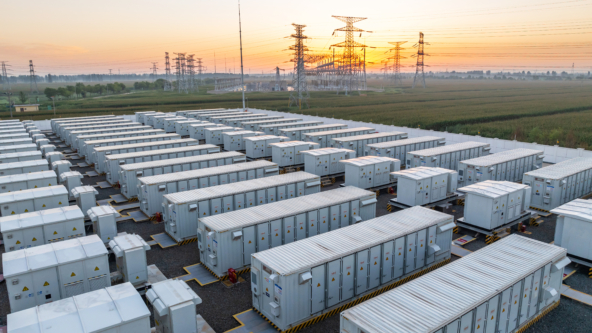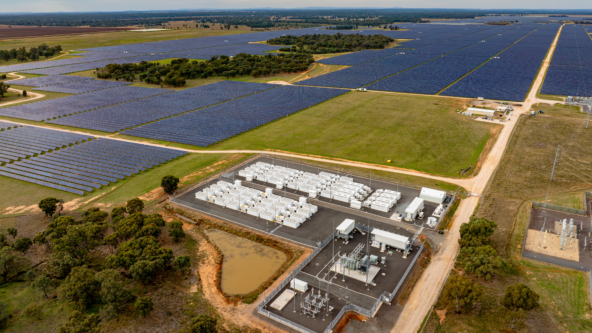This is a re-blog from Octopus website.
It’s time for more investors to step up the fight against the climate emergency we now face. As our new survey suggests, reducing investment into fossil fuels on its own won’t change the planet; more institutional money needs to be proactively invested in climate-saving renewable energy sectors and assets.
It’s been seven months since Octopus published its first renewable energy investment report. But during that time, we’ve witnessed a sizeable shift in favour of bolder action being taken. In June, the UK became the first major global economy to pass laws to end its contribution to global warming – the ‘net-zero target’ – by 2050. We hope Australia will follow suit in this approach to make significant changes in fighting climate change.
Net-zero can be achieved by reducing emissions as far as possible, then offsetting any remaining emissions with schemes designed to take greenhouse gases from the atmosphere, such as planting trees or using technology like carbon capture and storage.
Governments and companies around the world are now coming under increased, and sustained, pressure to change their behaviour. In September, millions of people across the world took part in the Global Climate Strike. Campaigners such as Greta Thunberg, who delivered a blistering speech at the United Nations Climate Actions Summit in New York, have been forcing global politicians to face the issue and improve their responses to climate change.
And the language being used to describe the urgency of the situation we find ourselves in is hardening too. Instead of passive phrases like ‘global warming’ and ‘climate change’, now you’re just as likely to hear references to ‘global heating’, ‘climate emergency’ or ‘climate catastrophe’. Because of this, institutional investment – a multi-trillion-dollar industry – can exert significant influence. Pressure works.
Gauging the temperature of institutional investors
Amid all the noise, we wanted to find out whether institutional investors (pension funds, fund of funds, insurance companies, private banks and more) were adjusting their thinking – and their portfolios – to address climate concerns. Our survey asked questions of over 100 institutional respondents from the UK, EMEA, Asia and the US. The total assets under management for this sample is approximately $8.6 trillion. The survey findings proved interesting.
Crisis consensus
Almost all (91%) of those we surveyed think the effects of climate change are already being felt and over three-quarters (78%) believe time is running out. Almost three-quarters (71%) believing they can make a material difference to outcomes through their investments. Yet 23% have not changed their investment strategy as a result of the intensifying spotlight on the issue in recent years, suggesting that in some quarters, the investment case still needs to be made.
What are institutions planning to do?
The majority of global institutional investors clearly recognise the importance and potential impact of climate change Over the coming decade, they plan on divesting $1.4 trillion from fossil fuels, while investing $943 billion into renewable energy assets. A welcome move, but not, in our view, nearly enough. It is time to make bolder changes.
Our findings suggest that institutions are not making the most of the renewables opportunity. While prioritising divestment is a good starting point, there needs to be far more emphasis placed on investing into climate saving sectors. Indeed, we have identified that, across our sample alone, 16% of institutions (accounting approximately $1.5 trillion of AUM) have no allocation to climate-saving sectors. By reallocating capital from fossil fuels to sectors that are actively climate-saving, we can focus on the energy transition: funding the assets and infrastructure that brings the world clean, green power.
What’s out there?
The ultimate driver for institutional investors is, of course, performance. They do not typically have a positive mandate to mitigate climate change. They do, however, have a mandate to deliver the best performance from their portfolio, which includes reducing exposure to companies that they view will have their performance compromised by climate change. However, just 30% of respondents preparing to divest from fossil fuels said they would invest the additional capital into climate-saving causes.
Current renewable asset allocations are too small
On average, global institutional investors allocate 4.6% of their portfolio to renewable energy (almost unchanged from the 4.4% we recorded in 2018), 2.2% to energy management and efficiency, 2% to electric transport, 1.3% to cleantech ventures and 1.1% to sustainable agriculture.
Of these, renewable energy generation and renewable infrastructure have been the most widely supported, having been historically boosted by various forms of government subsidy, which have provided investors with fixed, inflation-linked returns. As such subsidies have been phased out, institutional investors have been understandably cautious about being exposed to energy price fluctuations. Yet the investment case for renewables remains strong. Renewables continue to deliver attractive cash yields over the long-term, with technology that is proven at significant scale. Investors are becoming increasingly sophisticated in understanding and managing risks around these assets, including energy price uncertainty.
Inaction is no longer acceptable
At Octopus, we believe it is all our duty to be proactive and support ways to tackle the climate emergency. As a specialist renewable energy manager, it is incumbent on us to develop products that work for institutional and retail investors, in a future where investment in renewables will come with different types of risk and return.
In our previous report, we listed three ways to unblock further investment, through education on underlying risks, mitigation of risks, and the widening of investment options. We continue to believe these three initiatives will go a long way to support further allocation into renewable energy investments.
Across the world, institutional investors increasingly understand the critical significance of climate change, and their role in fighting it. But the biggest challenge faced right now is that of the ticking clock. Institutions are not usually known for the speed at which they change course. But time is running out and divesting from fossil fuels on its own will not save the planet. The good news is that it is possible to deliver attractive investment opportunities that have a positive impact on climate change without sacrificing performance. But to scale up this opportunity, institutional investors want, and need, more support.
Proactive investment is essential
As our survey demonstrates, most institutional investors clearly see divesting from fossil fuels, and avoiding exposure to highly polluting industries, as a way to reduce risk and to recognise the seriousness of climate change. But passively reducing exposure is just one side of the equation. It doesn’t bring us any closer to addressing the problem. It’s time for more institutions to take a proactive approach.
Institutions can invest greater amounts into ways to tackle the climate crisis, without sacrificing returns for their investors. Institutions that fail to do more, by actively supporting renewable energy projects, are missing out on a once in a generation opportunity to effect meaningful change.
In Greta Thunberg’s words: “Right here, right now is where we draw the line. The world is waking up. And change is coming, whether you like it or not.
Methodology
CoreData Research was commissioned by Octopus Investments to conduct a study of institutional investors to better understand their views about Climate Change and the role of Renewable Energy investments. The fieldwork was conducted by CoreData Research in July 2019 via an online survey. The sample includes 100 respondents from the UK, EMEA, Asia and the US. The respondent pool represents a spectrum of organisations including pension funds, fund of funds, insurance company, private bank, sovereign wealth fund and endowment and foundation. The total assets under management of the sample is an estimated $8.6 trillion.


